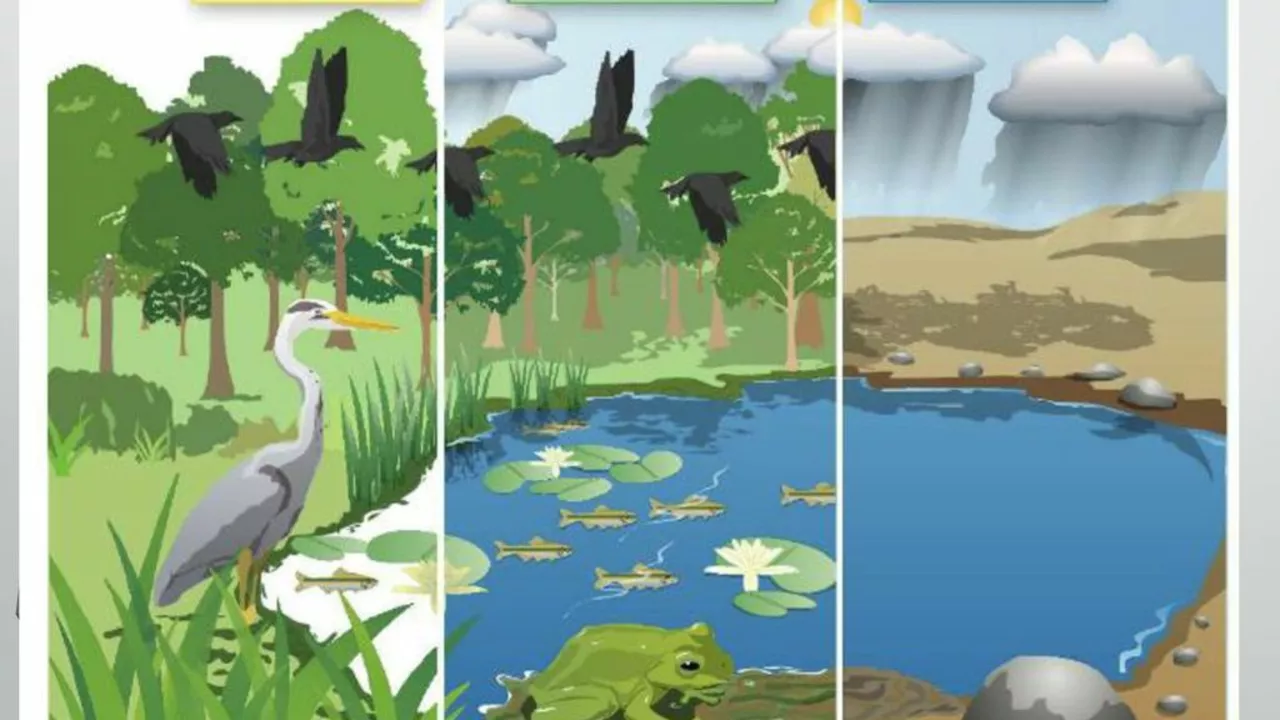What are “biotic” and “abiotic” components?

Understanding the Pulse of Life: Unraveling "Biotic" Components
Right, let’s kick things off with biotic components. Now, “biotic” sounds like something straight out of a sci-fi flick, doesn't it? But rest assured, folks, this isn't about little green men from Mars but rather the very organic, life-form entities we share our blue marble with. So, what exactly are biotic components? Well, this term refers to all the living things in an ecosystem - be it any creature from tiny amoeba to giant elephants, or any sort of vegetation like a blade of grass or even the giant sequoia tree. Biotic components are beautifully complex and filled with life, beaming with fascinating stories.
As Kieran, I've had a bit of an experience that’s worth sharing here. It was during a backpacking trip to the Amazon Rainforest, one of the most notable biotic components on Earth. One moment I am gaping at a python draped around a tree, the next, I'm watching leafcutter ants carrying pieces of leaves five times their own size. Trust me, witnessing the biodiversity in a dense rainforest first-hand makes one realise the true worth of biotic components.
Right, Now What’s A Biotic Football Game About?
Having dived deeply into the notion of biotic components, let's make this clear – it isn't simply about the living organisms themselves, but also their roles in the complex game of life! Every player in this biological game, whether a tree or an amoeba, has specific roles and interactions within their environment. It's a great deal like a football game really, where each player has a clear role, whether that's a goalie or a striker. The striker couldn't score without the midfielders, and the goalie is worthless without the defenders. The same principle applies; a lion couldn't survive without the gazelles, a tree without the sun or a fungus without decomposing matter. It's this invisible bond, these roles and interactions that make biotic components not only fascinating but crucial for the stability of ecosystems.
Dipping our Toes in the "Abiotic" Pool
So far, we've been talking about living organisms and their roles. But what about the non-living bits? That's where abiotic components swoop in. Abiotic components encompass everything non-living within an ecosystem - parameters such as light, temperature, wind, water, soil, and so on. This might seem a little less thrilling compared to biotic components but trust me, they have their own share of excitement.
Think about it – have you ever wondered why Sahara is a desert while the Amazon is ripe with life? It's because these regions differ in their abiotic conditions like sunlight, temperature and rainfall. Factual enough, Earth wouldn't be the same if all its abiotic components were homogeneous - there would be no ice caps, no deserts, no forests, nothing; just a giant, uniform sphere of boredom!
Can We Get an Abiotic Story?
Why, of course! Who am I, Kieran, to resist an opportunity to engage with another narrative of my thrilling escapades? My travels took me to the blisteringly hot Sahara desert. Equipped with generous amounts of sunscreen, shades and a hat, I was prepared to face the glaring sun. As I charted through the dunes, it dawned on me how these harsh abiotic conditions – intense heat and lack of water – support a unique ecosystem housing creatures such as the Fennec Fox, which have evolved to survive this harsh landscape. This experience further heightened my understanding of the critical role of abiotic factors in shaping an ecosystem.
Separate but Together: The Dance of Biotic and Abiotic
Here’s the kicker – you can't discuss the biotic without the abiotic. They're like Laurel & Hardy, Mario & Luigi or even Sherlock & Watson; the perfect duo, each incomplete without the other. It's the continuous interaction between the living and non-living elements that shape our world and its remarkably diverse ecosystems.
Be it a squirrel burying acorns (a biotic component) affecting the nutrient content of the soil (an abiotic component) or how the amount of rainfall (an abiotic component) affects the type of vegetation (biotic component) that can grow in a particular region – it’s a dance that’s been going on for millions of years and one that will continue to shape life on Earth.
In a nutshell, as much as we compartmentalise ‘biotic’ and ‘abiotic’ for academic understanding, it's essential to remember that they function together in harmony. They are an inseparable pair working in synergy to support the fragile yet resilient network of life on Earth.
Understanding the roles of and the relationship between these components doesn't just satisfy our curiosity but also inspires us to respect the balance of life and make choices that favor biodiversity and sustainability. Here's a pro tip: the more we know and appreciate about these complex interactions, the better equipped we're in conserving our world for generations to come.

Post-Comment